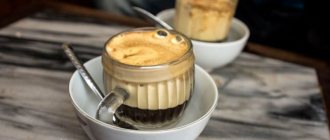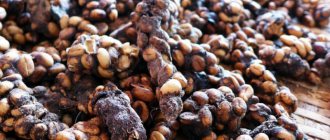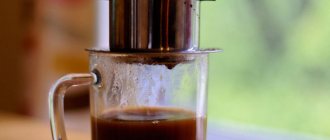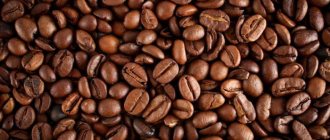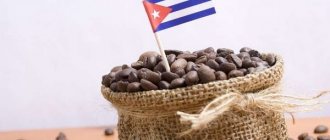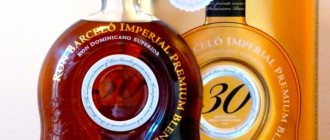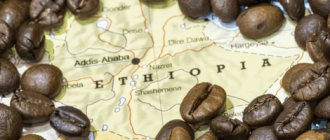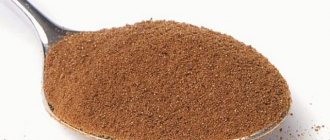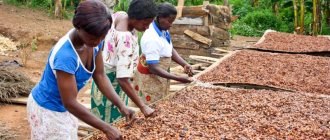Journey into history
French colonization brought more than just wars and misfortunes to Vietnam. Catholic missionaries, who appeared in large numbers in the early years of colonization, brought coffee beans here. The history of coffee in Vietnam dates back to 1857.
Coffee plantations in Vietnam
Very quickly, Vietnamese coffee enters the international market and by the middle of the 20th century it won second place in the world in terms of supply. With the outbreak of the war with the Americans, its production fell sharply and then began to rise again only in the 80s of the last century. Today, coffee plantations cover 503 thousand square meters. km of fertile land in mountainous areas, where up to 2.5 tons of grains are collected from 1 hectare.
Grain collection is carried out all year round. In 1996, Vietnam regained its honorable second place in the world coffee market; in 2001, it joined the International Coffee Organization, which forced the government to strengthen quality control of the exported product. In 2012, Vietnam moved up to 1st place, ahead of Brazil.
Today, almost all plantations are in private hands, the state share in the total volume is no more than 10%.
What kind of coffee to bring home
Recommended brands:
- Me Trang.
- Trung Nguyen.
- Che Phin 4 (includes four varieties: Catimor, Arabica, Excelsa, Robusta).
- Duong Phuong.
You can make a final decision by trying each one before leaving. It is recommended to do this by visiting the Four Seasons Coffee Shop. Without leaving the cash register, you can buy the variety you like there.
You should also purchase a filter. Without it, you won’t be able to achieve a unique “Vietnamese” taste.
Vietnamese coffee provinces
The first plantations were planted in the south, in Nghe An province in the late 80s of the 19th century. Later, Swiss microbiologist and researcher Alexandre Yersin discovered the ideal climate for coffee in the highlands around Da Lat, the capital of Lam Dong province.
Vietnamese collect coffee
By the beginning of the 20th century, coffee plantations occupied most of the Tay Nguyen plateau in Central Vietnam, which, in particular, included Lam Dong province. But the capital of coffee in Vietnam is considered to be the Dak Lak province, located there. In its center is the city of Buon Ma Thuot. There is a coffee exchange here.
Vietnamese recipes - how to cook
There are many Buddhists living in Vietnam who do not accept animal foods or dairy products. Therefore, all supplements are designed so that vegetarians can buy them. Even the condensed milk here is made from plant materials and cane sugar. It tastes a little different from cow's milk, but still delicious.
In addition to spices, the Vietnamese add cocoa, milk, egg yolk, and ice to their coffee. There are not many recipes here. Most of them are intended to be eaten cold.
With egg yolk
Many tourists have never tried this recipe, which, in addition to being delicious, is very nutritious.
Externally, the foam of their yolk resembles yellow whipped cream. To prepare one serving you need 1 chicken egg yolk, 10 g of ground coffee, fin and sugar.
Procedure:
- Let the coffee brew in the fin as described above.
- Separate the yolk from the white in any convenient way and beat it well. It's better to use a mixer. The yolk should increase in volume by 3 times.
- Place egg foam into the finished drink.
It is recommended to drink coffee after eating an egg. Mixing the two ingredients is not recommended. It is advisable to use homemade eggs to avoid poisoning or infection with pathogenic bacteria.
Vietnamese coffee varieties
Vietnamese coffee is supplied to the market in beans (80% of them are green), ground and instant. The latter are represented not only by pure varieties - Robusta and Arabica, but also by blends.
Robusta
Initially, only robusta ─ Coffea Canephora was grown in Vietnam. This is the least demanding variety. It is characterized by high productivity at low costs. The Vietnamese Robusta variety compares favorably with its Asian and African counterparts in its mild taste and high quality. It lacks the sour note associated with beans grown in other regions.
Robusta coffee
Robusta varieties grown in Vietnam's mild climate are called Blue Dragon and Sang Tao. Blue Dragon is characterized by a light pistachio flavor with a hint of cocoa bitterness and a hint of fried bread. The Sang Tao variety demonstrates much greater strength and density of taste. Robusta is the strongest drink; it leaves other varieties far behind. 100 ml of coffee contains a medical dose of caffeine - from 1% to 2.5%. No wonder it is considered a “morning” drink among the Vietnamese.
Arabica
Arabica is not the most popular variety in Vietnam; it occupies no more than 10% of all plantations. This is a demanding plant, instantly responding to worsening climatic conditions with a decrease in yield. The main plantings of Arabica are located in Central Vietnam on the Tay Nguyen plateau. The varieties grown are “Catimore” and “Bourbon”.
Arabica coffee
The most popular variety among the Vietnamese and, in general, all lovers of local coffee is “Vietnam Dalat”. The taste of this drink has a slightly nutty hue with a refreshing berry note. You can almost never find Arabica in its pure form here; it is always mixed with Robusta.
Chon (luwak)
For some reason, when guides tell tourists about this coffee, they call it “luwak”, although this is not a Vietnamese name at all, but an Indonesian name. In Vietnam it is called Chon.
It is considered the most expensive in the world due to the way it is produced. The main player in the production chain is the palm marten - musang. The value of grains that pass through his digestive system lies in the fact that they are enriched with animal enzymes. The grain itself is not digested by the animal, only its soft shell.
Coffee Chon
At certain times of the year, coffee berries are introduced into the diet of musangs, replacing other foods with them. Then the excrement is washed and the clean beans are roasted. During the fermentation process, the grains are not only saturated with useful substances, but also acquire a softer, smoother taste.
Excel
You are unlikely to find it on sale in its pure form. This is a very rare variety that does not always produce a harvest. It is used in blending to soften the taste and give it a somewhat unusual aroma.
Moka
This variety has a low caffeine content and a light caramel flavor. It can be drunk at any time of the day, unlike Robusta. The taste lacks sourness and pronounced bitterness.
When roasting, coconut oil is added, which gives this variety an unusual taste. The basis for preparation is Arabica. We have identified it as a separate variety because it is one of the favorites among fans of Vietnamese coffee.
Coolie
This is high quality premium coffee. The grains for it are selected manually, which is why it costs a lot. Contains Robusta and Arabica. It is produced in small quantities and only in one place - in Dak Lak.
Coffee processing
Thanks to selected beans, Kuli has a very rich taste and quite high strength.
Blends
The Vietnamese mix varieties in proportions slightly different from traditional (European) ones. Typically blends contain 60% Robusta and 40% Arabica. There is a ratio of 70/30. This is why Vietnamese coffee is a strong drink.
In tourist places you can find blends with Luwak coffee on sale. Most often there is no smell of this expensive variety in the mixture. Under the guise of an elite variety, they may sell you a mixture of Robusta and Arabica.
Chon coffee added to the blend makes it very expensive. By the way, where real Chon is sold, it will never be called “luwak”.
Where to buy
The cost of the drink in Vietnam is presented in the table.
| Type of coffee | Price (dong) |
| Cà phê (regular coffee) | 8000–10 000 |
| Cà phê sữa (coffee with milk) | 15 000–20 000 |
| Egg coffee | 20 000 |
Ground coffee is sold both in the supermarket and in specialty coffee shops. The cost varies from 25,000 to 30,000 VND (150–200 g). The risk is that there is always the possibility of purchasing cheap products at a high price.
The main advantage of purchasing coffee in a specialty store is a large selection. The cost is about the same as in the supermarket.
According to experienced coffee lovers, the best, most delicious coffee is sold in Dalat.
There are large coffee plantations around the city where you can buy the drink at a reduced price.
Coffee in Nha Trang
In coffee shops in Nha Trang you can find Me Trang and Trung Nguyen products. The cost of coffee varies from 2.5 to 50 dollars per package (225 g).
The cost of the most popular varieties is $5–10/500 g. In Russia, Vietnamese coffee costs 30–50% more.
Coffee in Nha Trang can be purchased at a higher price. An elite blend will cost between $50–100/1 pack.
Viet Farm store, Nha Trang
You can taste the drink in Nha Trang at the Viet Farm store. Depending on the client’s wishes, you can get both ground coffee and beans. Both are neatly packaged and hermetically sealed.
How can you save money?
In any large Vietnamese store you can find coffee that is sold ready-to-drink. The volume of one bottle is 0.5 liters. It's called Càphê Tươi.
This is a freshly brewed and bottled drink that saves both time and money.
Taste qualities are not lost at all. It is stored in a special portable refrigerator. When the visitor approaches, the street vendor takes out a bottle and pours coffee.
Càphê Tươi
The cost of one bottle is 34,000 VND. It holds 12 cups of 40 ml. The average cost of coffee in a good cafe is 12,000 VND. By purchasing such a bottle, you can save 1,100,000 VND.
"Signature" roasting
The smell and slightly chocolatey taste are the “trademark” of Vietnamese coffee. This is how it is fried only here. Once you try it or simply feel this magical aroma, you will never forget it and will not confuse it with anything else. Coffee beans are roasted with cocoa beans. The resourceful Vietnamese have many roasting methods, but this is the basic one. Chocolate flavor can be combined with caramel. This means that the grains were roasted with the addition of fruit syrups.
Coffee roasting in Vietnam
In Vietnam, coffee is produced not only for export, but also exclusively for domestic consumption. It is several times cheaper than what is sold in tourist shops. But that doesn't make it any less delicious. Many Russians living in blessed Vietnam prefer it.
Main brands
Coffee producing companies in Vietnam:
- Me trang.
- Con soc.
- Trang nguen.
Me trang products
The company has been on the market for about 18 years. The main benefits of Me trang coffee:
- Regular improvement of product quality.
- Modernization of production processes.
- Expanding your own image.
- Improvement of employee qualifications.
- Competent use of innovative technologies.
Blue Ocean coffee beans
One of the best products from this company is Ocean blue.
Products Con soc
The product grows on the Dalat plateau. The altitude above sea level is 1.5 thousand meters. The climate of this place is ideal for growing brands such as Arabica coffee.
Coffee with hazelnut oil “Con Soc”
The company's products are synonymous with the phrase “quality mark”. She received recognition in Russia, China, and Japan. Robusta coffee is also produced.
Company employees advise brewing the drink using special paper filters.
Products Trang nguen
The company produces, processes and exports coffee throughout the world. Today, residents of many Asian countries enjoy it, including Japan and Singapore.
Ground coffee "Napoleon Bonaparte" Trung Nguyen
The following types of beans are used in coffee products:
- Arabica;
- Chari;
- Robusta.
The best products from this manufacturer are Napoleon Bonaparte and G7 ground coffee.
Vietnamese coffee
There are several cooking methods – exactly the way the Vietnamese love it. The first is coffee with milk. Or rather, condensed milk with coffee. In Vietnam, it is customary to pour coffee into cups rather than cups. So, first, condensed milk is poured into it, and coffee is carefully poured on top. About the same amount as condensed milk, but very strong. Coffee and milk do not mix. The condensed milk should dissolve in it.
At your request, the seller can add ice there - up to the edge of the glass. It turns out to be the drink of the gods. At 6 o'clock in the morning you can see here and there small plastic tables where Vietnamese people are already sitting and enjoying their morning cup of coffee. Sellers prepare it in advance, pour it into bottles and put it in the refrigerator.
Vietnamese coffee
You can simply ask for “no sugar, no milk,” that is, without sugar and milk.
Do you want it hot, or do you want it with ice? You will not just be served a hot drink, but in a special “dropper”. This is a small metal mug with many holes in the bottom. Ground grains are poured into it, the whole thing is pressed with a press and poured with boiling water. While the drink seeps through the bottom of the “dropper”, it acquires a rich taste and strength. It is not customary to brew coffee in Vietnam. This is the only way to brew it. Almost everywhere they serve iced green Vietnamese tea with coffee. You can use it to dilute your coffee if it is too strong for you. The Vietnamese never drink their coffee to the bottom. There should be enough left in the glass for a couple of sips.
In the north, the Vietnamese love coffee with eggs. In Hanoi, it is served as follows: if you ordered hot coffee, they will bring you a glass in a bowl of hot water, and a separate cup with a raw egg, beaten until creamy. You can also order iced coffee, then it is served with ice.
Many people try to avoid drinks with ice in Asia. This, of course, is a personal matter for everyone, but so far none of the Russians or other foreigners have been poisoned by it or had stomach problems. And to be here and not drink iced coffee is a big omission.
The most popular recipes in the country
The features of preparing the drink look like this:
- A portion of coffee is prepared by passing it through a filter.
- The Vietnamese do not wait for brewing; they prefer to prepare the drink at the table.
- To make the coffee sweeter, condensed milk is used.
The use of condensed milk instead of regular milk is due to climate conditions. Over time, this method of brewing the drink contributed to a change in the taste preferences of the country's residents.
Ice + milk = Ca fe sua da
For preparation, high-quality ground coffee, condensed milk, granulated sugar, ice and water are used.
Ca fe sua da
Accessories:
- Vietnamese coffee maker.
- Cup for ice cubes.
- A glass for preparing a strong drink.
The “trick” is that boiled coffee should settle as the top layer in a glass with milk already poured. Then ice cubes are added to the container.
Before preparing coffee beans, they are highly ground. The grind should be very fine. The proportions with condensed milk are 1:1 (2-4 tsp of both). Additional ingredients: granulated sugar (if desired), water, ice.
Coffee according to this recipe is also brewed using a special Vietnamese filter.
Kopi Luwak - a drink made with musanga
The process of making luwak coffee from animal feces in Vietnam is specific and exotic. It involves the musanga, a small, cute animal that resembles a marten.
Musang
First it eats coffee cherries. After defecation, the coffee beans are collected, washed thoroughly, and then roasted.
The drink prepared in this strange way has a unique aroma and a more delicate, rich taste.
Yogurt coffee
It is a combination of coffee and yogurt mixed together. The bitter drink goes well with the delicate taste of the creamy paste. It is best to combine mango yogurt and any coffee.
Ca phe sua chua
Ca phe sua chua is prepared very simply: thick yogurt is mixed with black coffee.
Egg coffee
In the north of the country, egg coffee is extremely popular. The Vietnamese name is Ca phe trung. The drink is better known to tourists as Egg coffee.
Can be served both hot and chilled. Hot is poured into a ceramic container. The glass is placed in a large bowl of hot water.
Ca phe trung
The taste of the beaten egg is reminiscent of creme brulee.
Serve chilled in a glass container with ice cubes.
You can't mix it. First you need to eat an egg, only then drink a drink.
Coffee + banana + avocado
Tourists visiting Hanoi and Ho Chi Minh City are advised to enjoy Sinh to ca phe chuoi bo. This is a coffee smoothie made from an aromatic drink, banana and avocado.
The uniqueness lies in the fact that it combines the “incompatible”: caffeine and vitamins.
Cooking options
There are several ways to brew Vietnamese coffee. In addition to the classic version, other recipes for preparing an invigorating drink at home are also popular in the country.
Brewing in Fin
Making coffee using this method is quite simple. Thanks to the use of fin, it is possible to fully reveal the aroma. The preparation procedure boils down to the following steps:
- The press filter is doused with boiling water.
- Add a spoonful of ground grains.
- Pour literally 20 ml of boiling water.
- A press is placed on top.
- Add a spoonful of crushed grains again.
- Fill the filter completely with boiling water.
- Wait until all the liquid has seeped into the bowl.
White coffee
The peculiarity of this recipe is the addition of condensed milk and an unusual technology for combining the components. Follow the following sequence of actions:
- Place a couple of spoons of condensed milk on the bottom of the bowl.
- A filter is placed on top and ground grains are laid out.
- Press them with a press and pour boiling water over them.
- When the water has completely seeped through, the distinction between the coffee top and the milky bottom becomes clearly visible. All that remains is to mix the ingredients and add ice cubes.
Vietnamese coffee occupies a significant position in the global coffee market. Several varieties of grains are grown in the country. Each of them has a number of distinctive features. Having understood them, you will be able to choose the most suitable option.
How to brew?
To enjoy a drink prepared “the Vietnamese way,” you need more than just coffee.
Everyone knows the real rituals that the Chinese perform to brew delicious tea. But the Vietnamese have their own thoughts on how to prepare Vietnamese coffee, and for those who bring the treasured beans home, this information is simply necessary. In the traditional sense, brewing does not occur, and a Turk is not used here. .
Vietnamese coffee is brewed in traditional teapots - fins, which are essentially a filter and a press, thanks to which the taste of the coffee is fully revealed. Such “fins” cost from 15 to 50 thousand dong, depending on the size and material.
To brew Vietnamese coffee in such a device, add 3-4 tablespoons of coarsely ground coffee on top of the mesh and pour boiling water over it. Wait 3 minutes, this will allow the coffee to swell a little, then pour boiling water. Swollen coffee will leak water drop by drop. After about 5 minutes, you will get the best Vietnamese coffee. The Vietnamese love to add condensed milk to their coffee, instead of sugar.
Of course, not many people know how to brew truly delicious tea or coffee and are content with mediocre methods. Moreover, you still need to buy a special filter and press. However, only such ritual brewing can fully reveal the flavor of the drink.
Vietnamese coffee, like tea, is a real work of art, because a properly brewed drink not only allows you to enjoy the taste, but also gives genuine moments of peace. And for this, it is not a pity to buy an additional press and filter, thanks to which the simple process of brewing real coffee will become a good habit for you.
Con SocMe Trang pharmacy arabica dalat brew coffee trang vietnamese robusta trung nguen fin2015-03-20
Coffee from Vietnam is a must-buy during your vacation! Thanks to the mild tropical climate, the grains not only have time to ripen, but also get enough sunlight and moisture. Add to this a specific taste depending on the type of soil, and you will get an incomparable aromatic souvenir.
Content
Where to buy coffee in Vietnam and how much does it cost there?
Buying coffee in Vietnam and in particular in Nha Trang is not a problem. It is sold in markets, coffee shops, souvenir shops and supermarkets.
Most often it is ground and bean coffee. Instant coffee is less common, it can be purchased in grocery stores and is often 3 in 1 Nescafe, or the g7 brand, which belongs to the largest Vietnamese manufacturer Trang Nguen.
In tourist areas, coffee from plantations can even be purchased in pharmacies. In general, these “pharmacies” are a separate topic for discussion. Under the sign of a pharmacy, you can most often find anything except the pharmacy itself in our understanding of the word. Such a tourist pharmacy is often a store selling ointments, tea, coffee, snake tinctures, plus currency exchange. Therefore, if you need a pharmacy with real medicines, it is better to look for a sign with the English “Pharmacy”. In tourist pharmacies, it makes sense to buy not factory-made coffee from plantations, but standard coffee like Me Trang is almost half the price in shopping centers in Nha Trang. In supermarkets, the price of a package of 500 g of ground coffee starts from 65,000 dong; in markets and souvenir shops, the price can reach up to 120 thousand dong.
For more information about food prices in Nha Trang, read our article “Prices in Nha Trang, Vietnam“.
A large number of coffee plantations are located in the Dalat area, so it is traditional to buy tea and coffee in this city.
- Luwak coffee is the most expensive coffee in the world from Vietnam.
